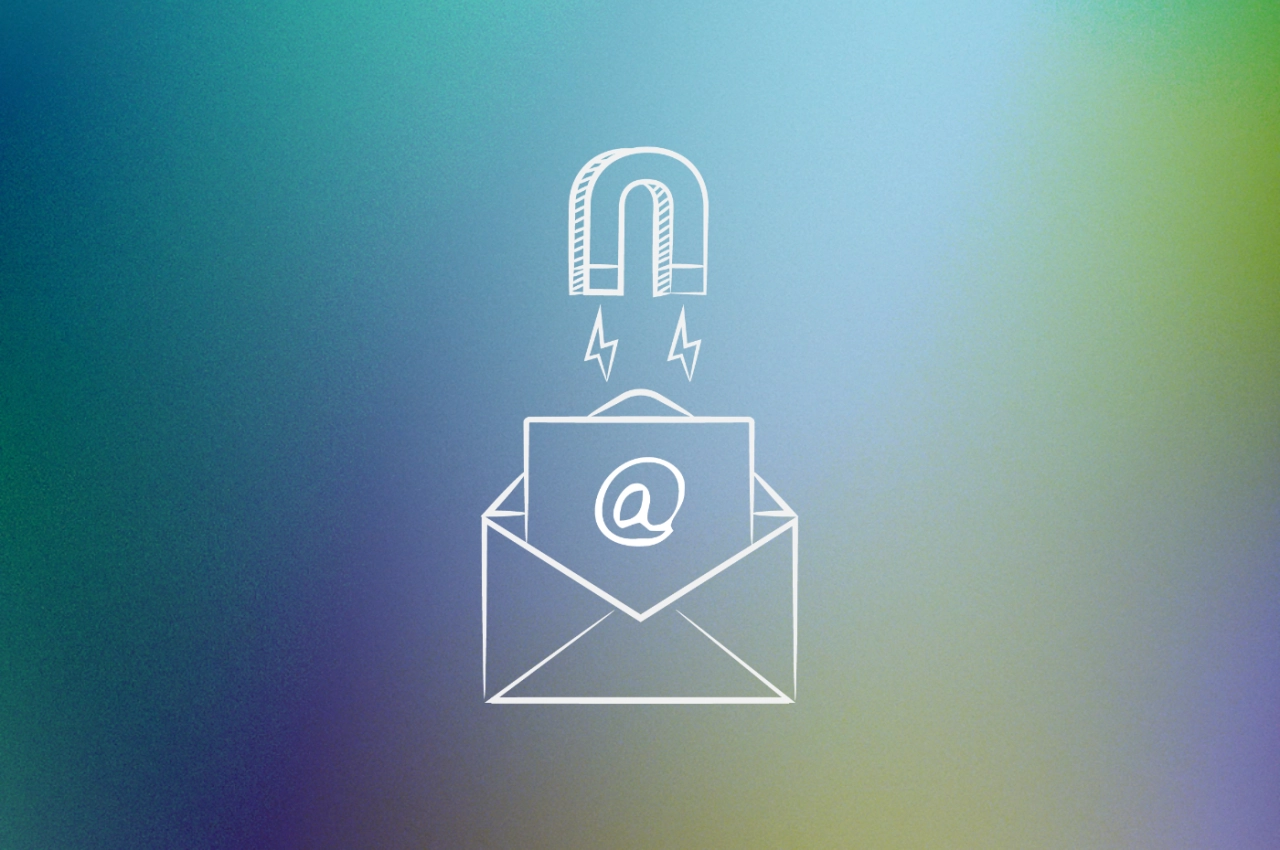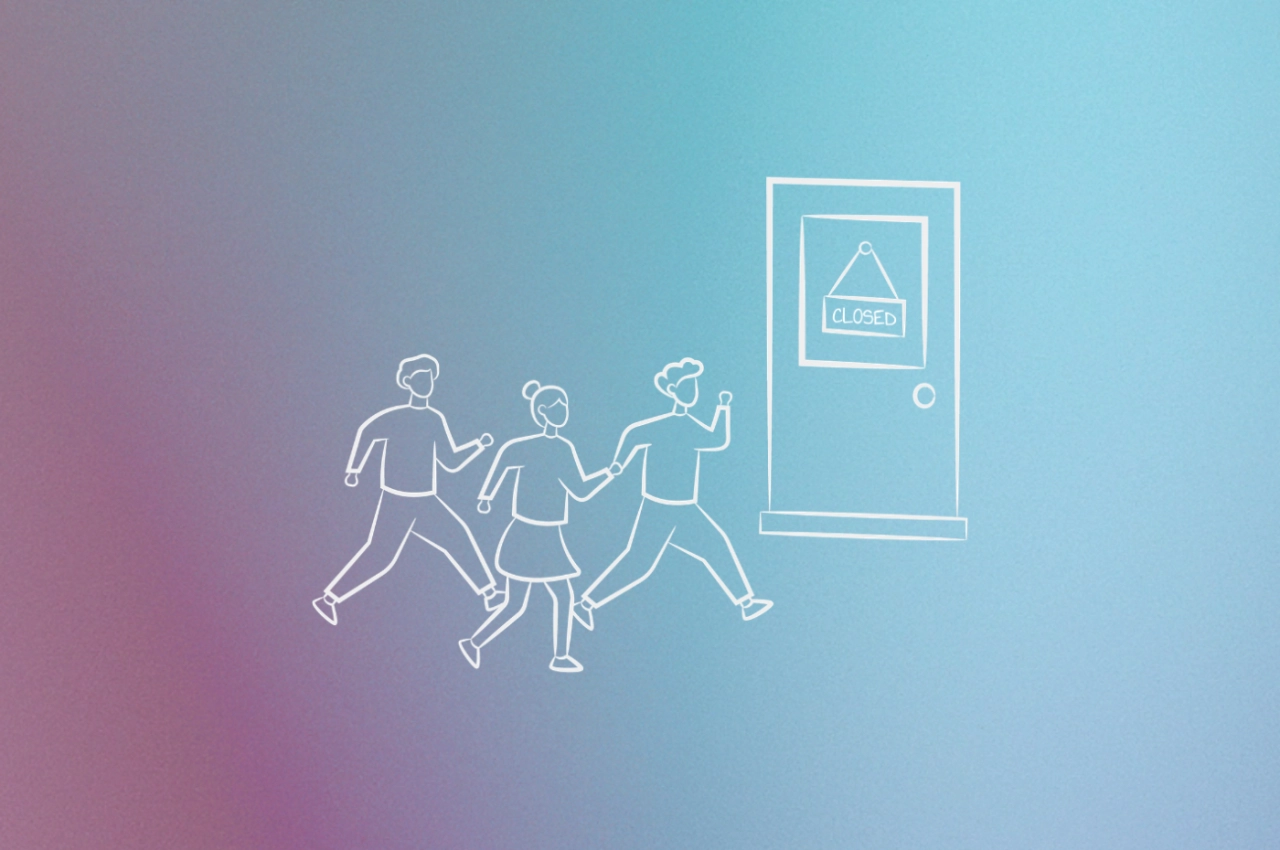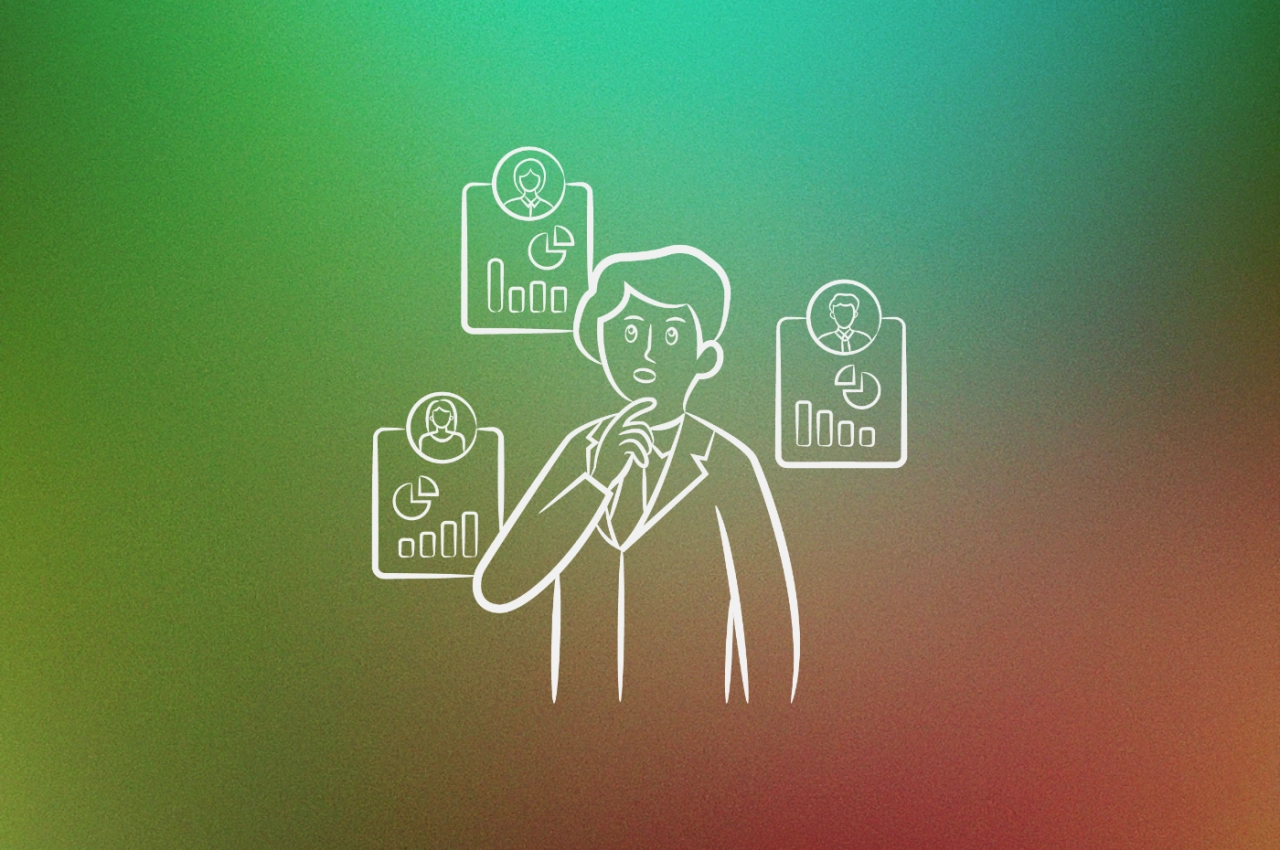- Effective time management and establishing a client portal are essential for managing multiple clients and ensuring quick access to important information while keeping client data centralized.
- Documenting everything from project briefs to work delivery sign-offs minimizes miscommunication risks and enhances client satisfaction, ensuring a reliable record of client expectations and project scope.
- Automating repetitive tasks and setting up self-service solutions like help centers, subscription management, and ticketing systems can significantly reduce time spent on inquiries and streamline client management processes.
“I want more clients”, you say, but what do you do when you are graced with an abundance of them? I’ve come to understand that managing your clients is an art as much as it’s a science. Through my experience, I’ve identified several crucial elements that can make or break your ability to effectively manage multiple clients.
In this post, I’ll share the top 7 tips to help you manage multiple clients to avoid client churn and scale your revenue.
The challenges of managing multiple clients
From managing multiple projects to communication challenges—all these and more can really mess up your day as an agency owner when juggling multiple client projects.
Time management
As the clock ticks, time flies away, more work piles up, and deadlines loom. Time management is a major challenge when you’re busy overseeing every little task related to your agency. Project management platforms play a crucial role in managing time effectively.

Subconsciously, you find yourself doing the less important things—say, you are busy scrolling on LinkedIn instead of allocating tasks to team members. Or even worse, you struggle to meet deadlines because you don’t want to delegate.
If you’re not always productive, you’re not alone. A study shows that 88% of working people procrastinate daily. Furthermore, the same study shows that 31.9% said they procrastinate between two and three hours each day. You can’t expand your bandwidth if you struggle with time management.
Task priority
“The key is not to prioritize what’s on your schedule but to schedule your priorities.” says Stephen Covey. There are so many tasks on your to-do lists daily—agency and client tasks. With too many things to focus on, it will be hard to stay organized.
Communication
Miscommunication can occur when the way a client writes a message is interpreted differently by you. This can happen when the message lacks detailed background information concerning the project.
For example, a B2B client emails a content agency founder asking for updates or information on a project. However, the email doesn’t clearly explain the project in question or give any actionable context. In this case, the team member may provide irrelevant information—or worse, ignore the email.
Resource allocation
It’s a challenge to accurately allocate different tasks and client project resources to your employees. Utilizing a project management system can significantly improve resource allocation by enhancing organization and accountability.
When juggling multiple projects for different clients, you must match the client’s projects to the right person. But what if the right person is on holiday? You should have a backup plan ready for such cases.
Different clients’ industries and expectations
Every client you come across has a goal and an expected outcome. So, imagine having multiple expectations to meet for different industries. What a cybersecurity client deems as an outcome may be generic in the eyes of a client in e-commerce.
How to manage multiple clients (7 tips)
If you’ve reached the point where it’s become hard to manage clients, it means your agency is enjoying some level of success—which is a good problem to have.
 Victor Ijidola,
Leaps
Victor Ijidola,
Leaps
And it’s a good problem you can solve. Here are 7 tips to manage multiple clients.
Using a client portal software
A client portal is a secure and centralized platform where clients can find all information related to the purchased services.
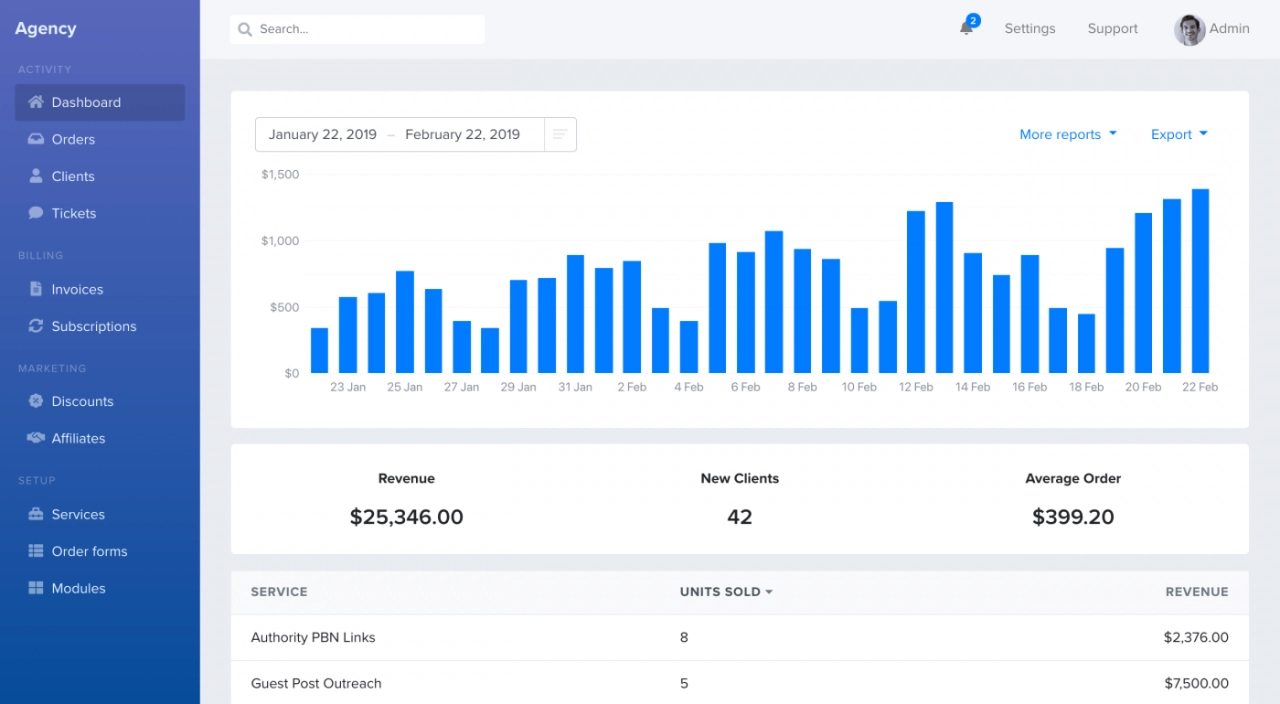
This software helps you save time and handle several client questions because all information is in a central place: client communication, projects, files. It’s not surprising that many agencies want to create self-service client portals for their productized service offerings.
Looking to make sure SPP.co is right for you? Get on a call with our customer success team.
Effective time management
“If you can’t measure it, you can’t manage it” is a famous quote attributed to Peter Drucker. This quote addresses the core issue of managing time—meaning, you can’t manage time if you don’t measure it.
To manage multiple clients effectively, you need to keep track of time. As Morgan Housel puts it: “Controlling your time is the highest dividend that money pays.”
To control time, you have to understand the types of tasks you have in a day, how much each takes approximately, and how to prioritize.
When you understand the types of time, proceed to apply techniques like:
Creating discrete blocks of time each day when you will handle major activities like clients’ coffee chats and team brainstorming.
Applying The Eisenhower Decision Matrix, a 2×2 matrix—a visualization tool that forces you to differentiate between the urgent and the important client’s tasks. It lets you prioritize your time accordingly and unlock new productivity and growth.
If managing multiple clients gives you a headache, like it gave me when I ran a content agency, get an operations manager. It doesn’t have to be a new hire; someone on your team—who enjoys operations work—could do it. You might need to reduce their current tasks to give them the time and energy for operations work.
 Victor Ijidola,
Leaps
Victor Ijidola,
Leaps
Set realistic client expectations
If you fail to meet client expectations, clients are unlikely to stay with you. Every client you work with has a mental image of their desired outcome.
The mistake I see many agencies make is this: They are not clear and specific enough on their promises. Secondly, they fail to commit to the promises on their pricing page.
Let’s assume I subscribe to a monthly plan for a client portal software, and the primary promise is that I get a helpdesk module. After purchasing, I find out that this feature is missing. This results in an awkward feeling.
That’s what some service providers do; they commit to promising A and end up delivering B instead. I call it “expectation disconnect,” which is the differences that arise between your business’ service offering and what the client expects to receive in return.
Document everything
Meticulous documentation is the key to successfully managing multiple clients. By implementing a documentation system, you can provide a record of the client’s expectations and project scope. It also serves as a reference point for your team, enabling them to solve client’s problems.

Improper documentation is a leading cause of project failure, accounting for nearly 50% of project challenges. So, document everything about your client collaboration:
project briefs
project timelines
client contract
client meeting notes
client feedback
invoicing
orders
work delivery
Documenting everything reduces the risk of miscommunication and ultimately scales client satisfaction.
Create a process
If you want to have the grit to manage multiple clients, you must love the process. A solid client management process is the backbone of productive client management. It gives you the structure, roadmap, and reference points necessary to deliver what your clients expect of you. Project managers play a crucial role in setting up and following these processes.
To get results from your process, make sure you:
Follow a routine: During my conversation with Victor Ijidola, he added that he usually followed a routine when working on clients’ content. He said: “As the person responsible for creating briefs and outlines and conducting SME interviews, I quickly looked at the deadlines every morning for each of those tasks to see which ones could be pushed to the next day.” This helps him prioritize tasks and meet up with deadlines.
Set up a process: If task A is created, it is assigned to person B. Setting up a process involves assigning tasks to various team members in a timely and precise manner. For example, perhaps if a client faces an issue using the agency client portal, you can assign it to an account manager who specializes in onboarding.
Set up self-service
Having multiple clients means having multiple inquiries and requests to respond to. It can be frustrating and time-consuming. But with self-service solutions, you can reduce time spent responding to basic client questions and improve customer experience.
Here are some self-service solutions you can create:
Help center: If you onboard new clients, make use of SPP’s client onboarding portal. You can integrate a video, links to helpful resources, and explain how to use the client portal.
Subscription management: Your clients might be too busy to remember that they need to renew their subscription to your service. Set up a subscription management tool to automate billing and track renewals.
Ticketing system: Tickets help you to track, manage, and resolve client’s issues. This system differs from a help center because it’s interactive. A robust ticketing system acts as a centralized hub, allowing agencies to efficiently manage client interactions, requests, and tasks across multiple clients with diverse needs.
Automate repetitive tasks
Tracking tasks manually isn’t something you should be doing. Automate task tracking so you can focus on more important things.
Here are a few action tips to follow:
Firstly, identify repetitive, manual tasks that consume significant time and resources.
Next up, invest in robust automation tools tailored to your agency’s needs. This way, you can assign tasks to each team member without hassle.
Lastly, train your employees on how to set up automations so you can focus on other tasks.
By automating repetitive tasks, you can fasten service delivery to clients and increase your agency’s productivity.
Streamlining client workflows
Managing multiple clients can be a daunting task, but streamlining your workflows can make it much more manageable. By creating efficient processes and leveraging technology, you can optimize your workflow and deliver high-quality services to your clients.
Creating efficient processes
Creating efficient processes is all about identifying and eliminating unnecessary steps, automating repetitive tasks, and streamlining communication. Here are some practical steps to achieve this:
Map out your workflow: Start by mapping out your current workflow. Identify each step involved in managing client projects and look for areas where you can improve efficiency. This might involve cutting out redundant steps or finding ways to automate certain tasks.
Implement a project management tool: A project management tool can be a game-changer when it comes to managing multiple clients. Tools like Service Provider Pro, Asana, Trello, and Basecamp allow you to track progress, assign tasks, and set deadlines. This helps ensure that nothing falls through the cracks and that your team stays on track.
Establish clear communication channels: Clear communication is key to managing multiple clients effectively. Set up dedicated communication channels for each client, whether it’s through email, a messaging app, or a project management tool. This helps keep all client-related information in one place and makes it easier to stay organized.
Set up a system for tracking and managing client requests: Having a system in place for tracking and managing client requests can save you a lot of time and headaches. Use a project management tool or a ticketing system to keep track of client requests and ensure that they are addressed in a timely manner.
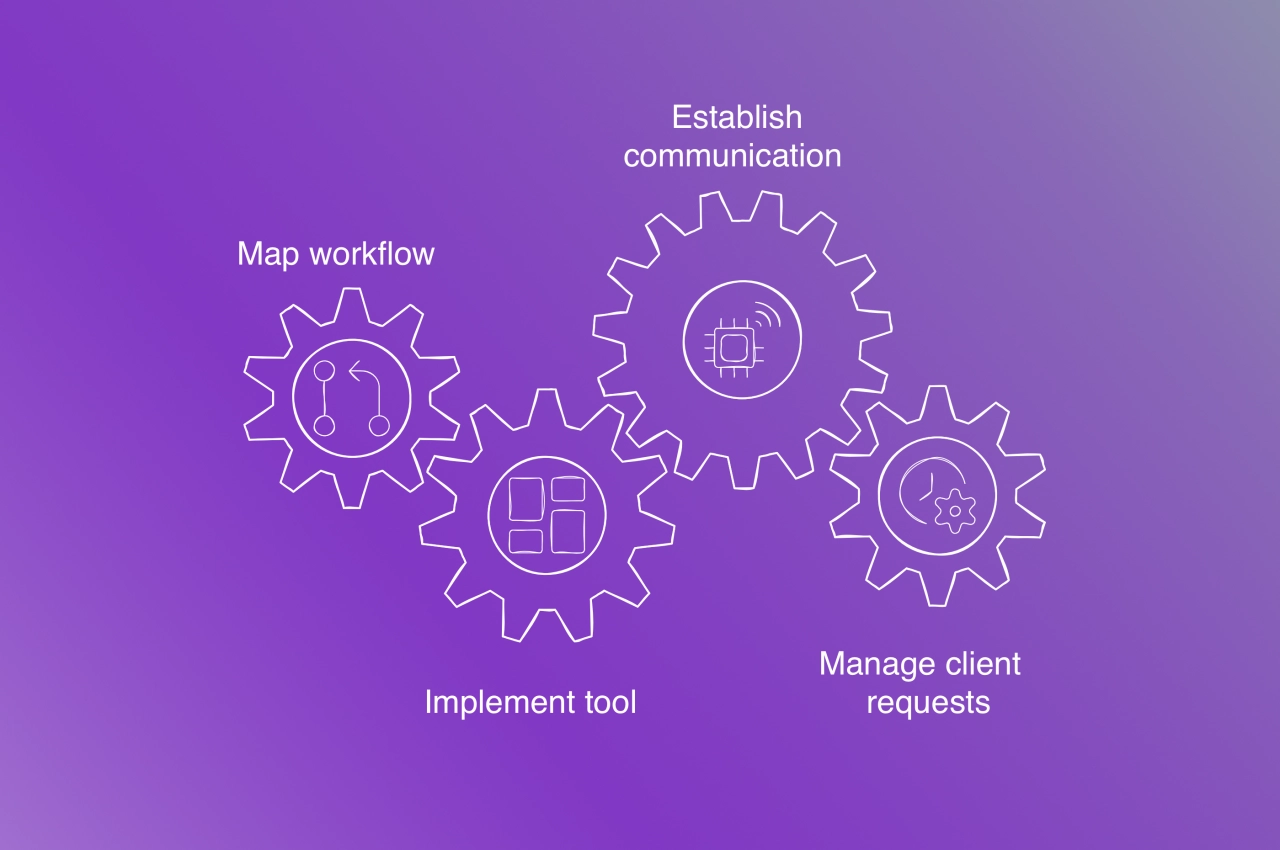
By creating efficient processes, you can reduce the time and effort required to manage multiple clients, allowing you to focus on delivering high-quality services and growing your business.
Leveraging technology for workflow optimization
Leveraging technology is a key aspect of streamlining client workflows. By using project management software and other tools, you can automate repetitive tasks, track progress, and communicate with clients and team members more effectively.
Here are four popular project management tools that can help you manage multiple clients and projects:
Service Provider Pro: SPP is a versatile project management tool that offers features like task management and has a built-in CRM feature. It’s great for managing multiple clients and keeping track of all your projects in one place.
Asana: Asana is another popular project management tool that allows you to create and assign tasks, set deadlines, and track progress. It also offers features like project timelines and workload management, making it easier to manage multiple projects.
Trello: Trello uses a card-based system to help you organize tasks and projects. It’s simple to use and great for visualizing your workflow. You can create boards for each client and move tasks through different stages of completion.
Basecamp: Basecamp is a comprehensive project management tool that offers features like to-do lists, file sharing, and team messaging. It’s great for keeping all your client-related information in one place and ensuring that your team stays on the same page.
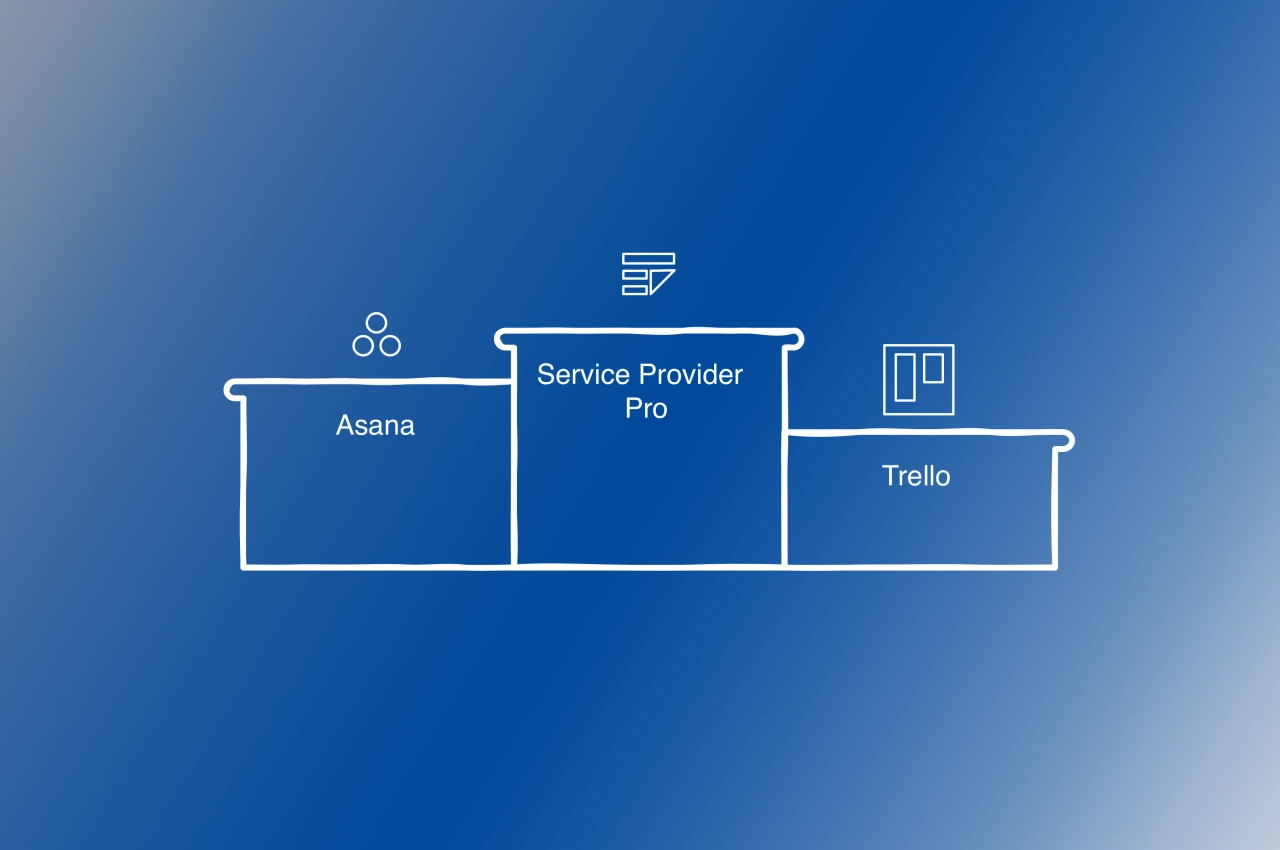
These tools allow you to create and assign tasks, track progress, and set deadlines, making it easier to manage multiple clients and projects. Additionally, many project management tools offer features such as time tracking, invoicing, and reporting, which can help you optimize your workflow and improve your bottom line.
Frequently asked questions
How do you manage multiple clients at the same time?
Prioritize important and urgent tasks, delegate work efficiently to the team, and automate repetitive tasks. Hire a project manager or operations manager to help manage workflow. Additionally, systemize client work processes to avoid burnout.
How do you prioritize tasks when dealing with multiple customers at once?
The first step is to examine tasks that are (not) urgent and (not) important. After assessment, focus on urgent tasks first, and assign them to team members who can deal with them quickly.
How do you handle multiple customer inquiries simultaneously without sacrificing quality?
Implement a triage system: critical issues within 2 hours, high priority same day, standard inquiries within 24–48 hours. Use templates for common questions while personalizing responses. Batch similar inquiries together and communicate proactively with status updates to prevent additional inquiries.
Set up a system for client management
It’s always a great feeling to onboard more clients. But, like I said earlier, it gets tricky and overwhelming.
If you snooze, you lose—that’s the case when you fail to focus on fundamental principles that help you manage multiple clients. Set up a system that will help reduce the burden of work overload and increase team efficiency.








